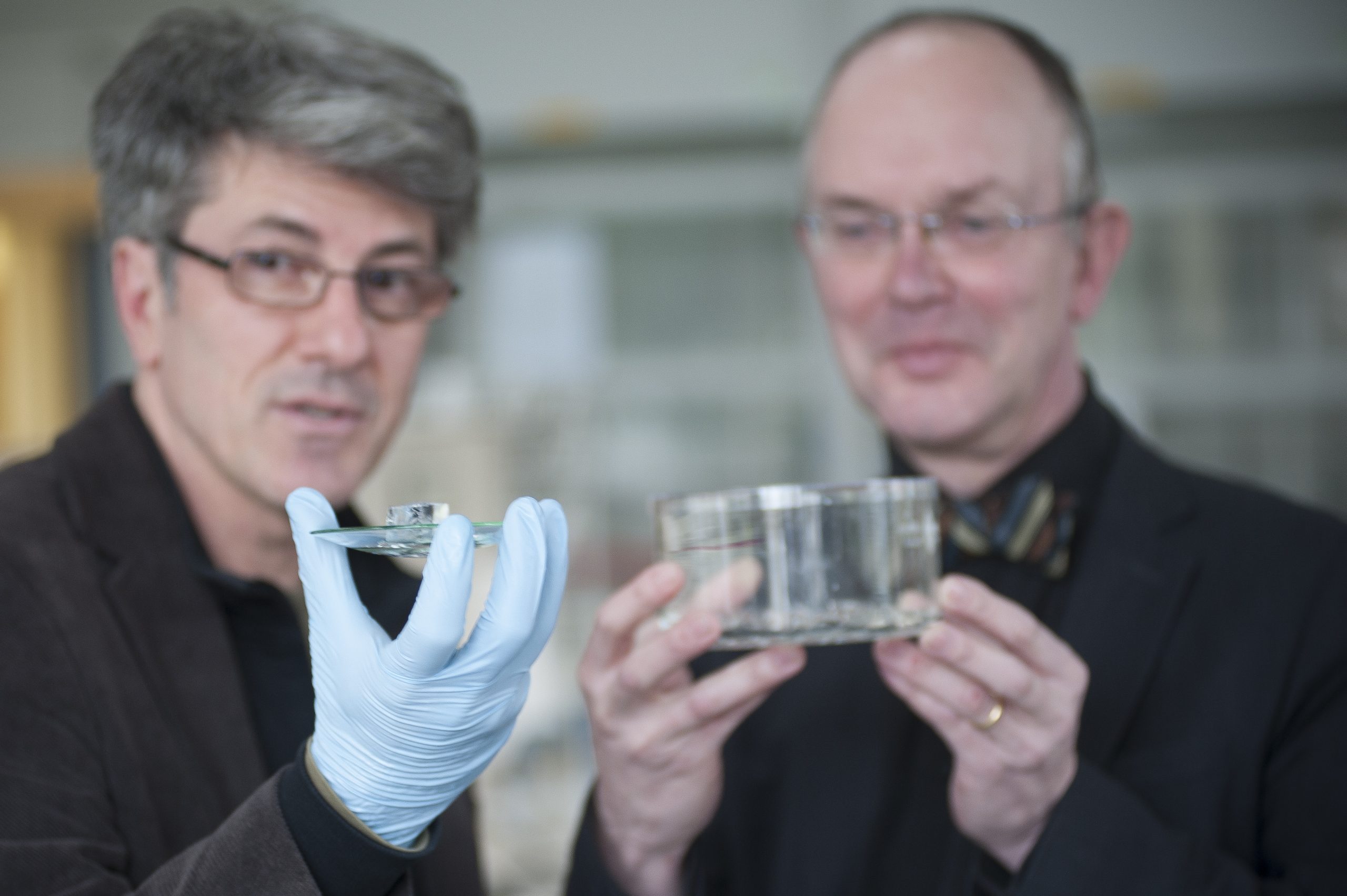Researchers from TU and Nijmegen University have amazed and inspired other scientists with a synthetic super gel that behaves biologically.
Science magazine Nature says the polymer gel will provide opportunities for materials scientists for years to come. It illustrates the gel’s wondrous properties by a thought experiment: ‘Take one kilogram of polyisocyanide (the gel, ed.). Sprinkle liberally across an Olympic swimming pool. Warm gently. Within minutes, your jelly is ready. Serves 25 million.’ Nature highlighted the publication* from Delft and Nijmegen researchers by two related articles in News & Views. This kind of attention usually labels the finding as something significant.
The gel that researchers in the group of Professor Alan Rowan and Dr. Paul Kouwer from Nijmegen University have synthesized consists of molecules with a stiff helical backbone made from polyisocyanide carrying thousands of ‘hairs’ sticking out perpendicularly. Under the right conditions these molecules group together, forming bundles, resulting in an amazingly stiff polymer network of fibers.
In one of the accompanying articles, Margaret Gardel, biophysicist at the University of Chicago, points out the extraordinary thing about these molecules: it is the first-ever polymer that can match the rigidity found in biological polymers. “Nearly all biopolymers, like DNA or collagen, have some inherent rigidity”, she explains. “Synthetic polymers, by contrast, tend to be extremely floppy.”
The Nijmegen group has been working with polymers for years, says Professor Stephen Picken (AS). “But with this one, they noticed something strange: it had gone totally fluid in the fridge.” And after warming up, it stiffened again.
One could imagine applying the cold and fluid gel over an open wound
Picken and Dr. Eduardo Mendes (both co-authors) work in the Advanced Soft Materials (ASM) group. They specialise in soft matter and soft materials such as polymers, liquid crystals and gels. The ASM-group measured the properties of the supergel from Nijmegen, including its stiffening at increasing temperatures.
Dr. Mendes explains what happens: “The so-called hairs decorating the chiral backbone consist of short peptides with long tails made of repeating carbon and oxygen chains. These C-O-tails readily grab water molecules, making the polymer extremely soluble.”
But with increasing temperature, the tails squeeze out the water molecules decreasing solubility and forming extremely thin and stiff fibres. AFM (Atomic Force Microscope) images of the stiffened polymer reveal a network of more or less homogenous 10 nanometre thick fibres. Picken estimates that in the process one polymer molecule get surrounded be six to eight others to form a fibre.
Such spontaneous self-ordering is only known from biological systems. It is for example the way that microtubules are made to form cellular skeletons.
So, what can the stuff be used for, except for rigging a swimming contest? Well, because of its biocompatibility, the first applications people think of are biomedical. One could imagine applying the cold and fluid gel over an open wound, after which it heats up and forms a network very much like the natural fibrin turning into fibrinogen. In fact, the Nijmegen researchers are testing it on a pig’s paw they’ve put in the oven to heat up to 40 degrees Celsius. Other medical uses mentioned include drug-delivery and tissue engineering. Remember: it’s still early days.
Picken can imagine useful applications in the drilling industry as well. You would have a cooled basin containing the fluid gel, it would get pumped down into the heat. While mixing with the drilling debris, the gel stiffens. The thick fluid containing rocks and sand gets pumped up, cools in a basin, drops it contents and it ready for a next round. How cool is that.
Paul H.J. Kouwer, Matthieu Koepf, Stephen J. Picken, Eduardo Mendes, Alan Rowan et.al: ‘Responsive biomimetic networks from polyisocyanopeptide hydrogels’, Nature 493, Issue 7434, 31 January 2013, doi:10.1038/nature11839
Do you have a question or comment about this article?
j.w.wassink@tudelft.nl


Comments are closed.